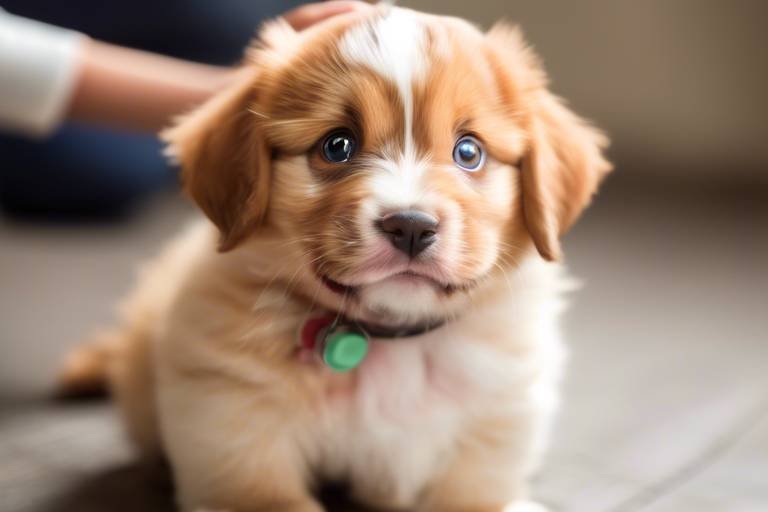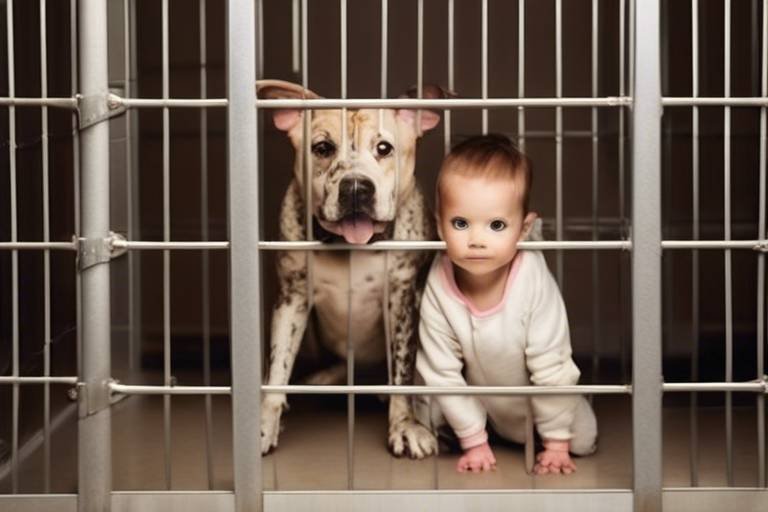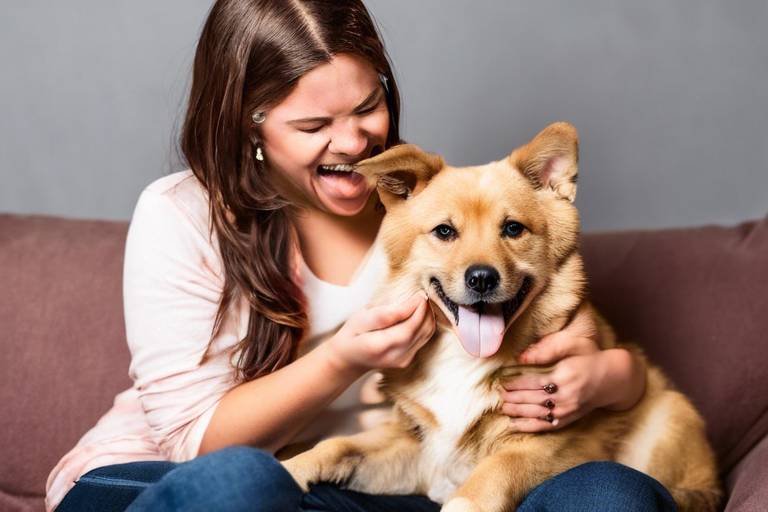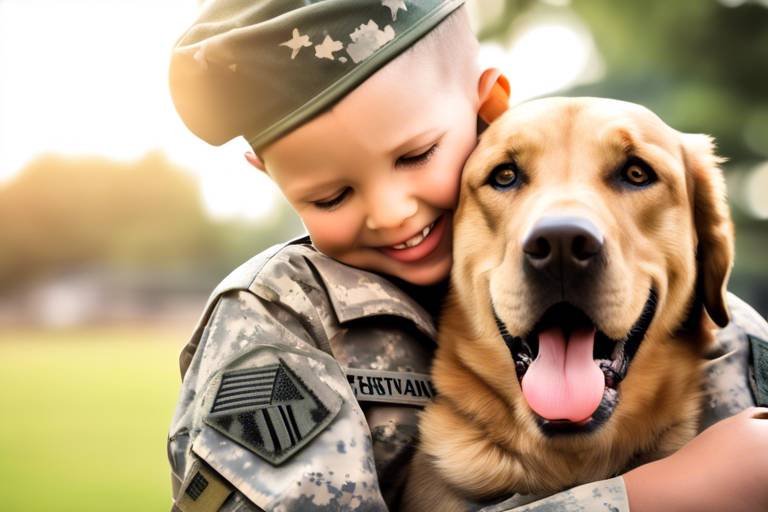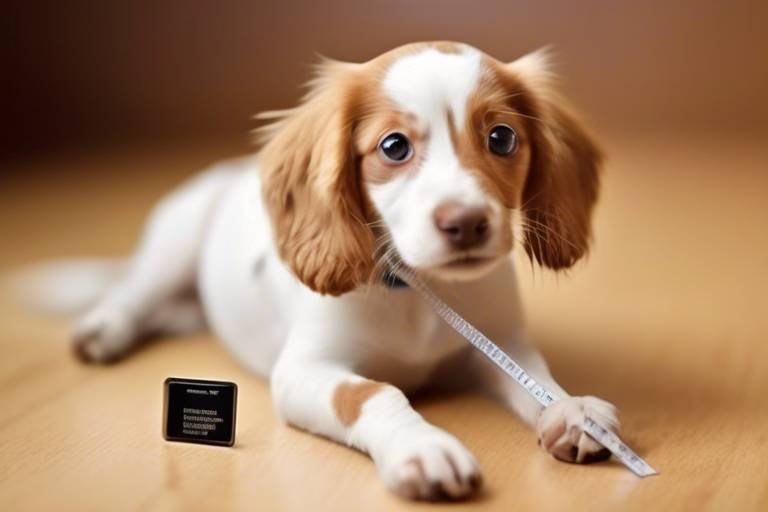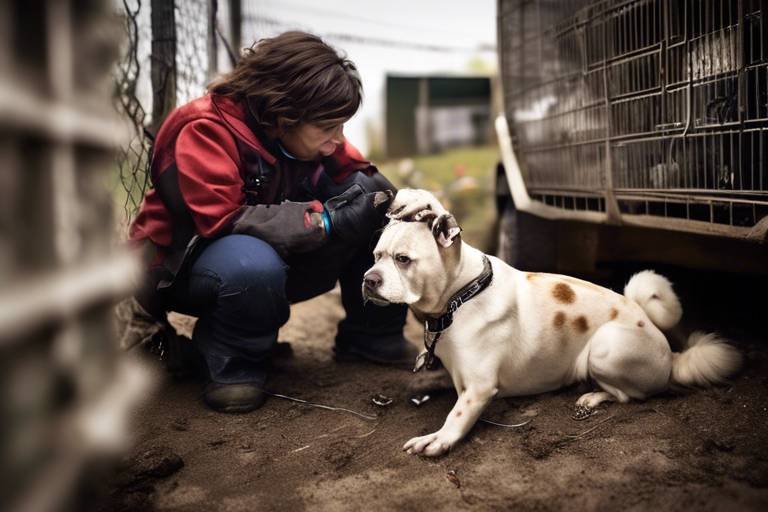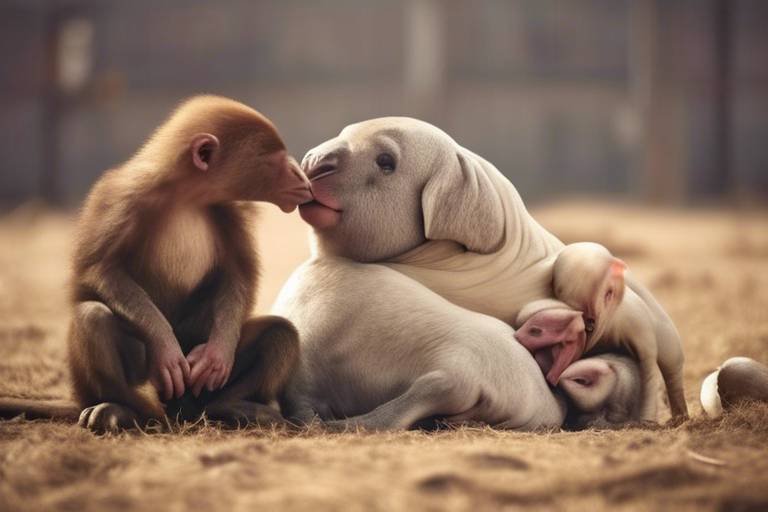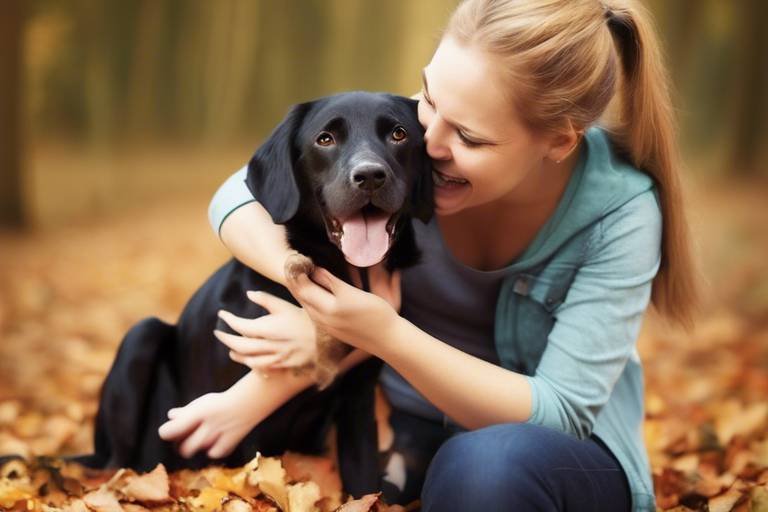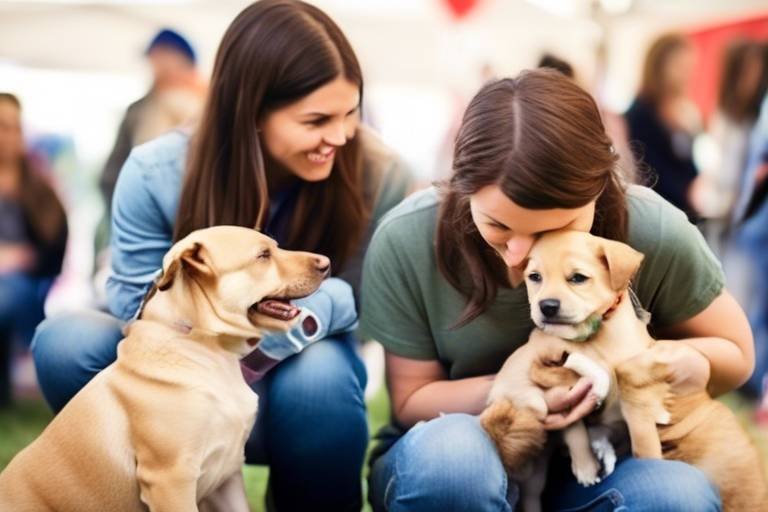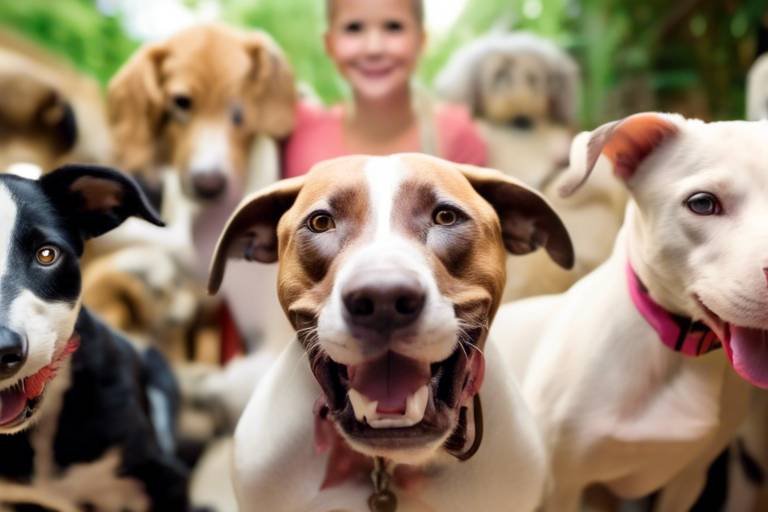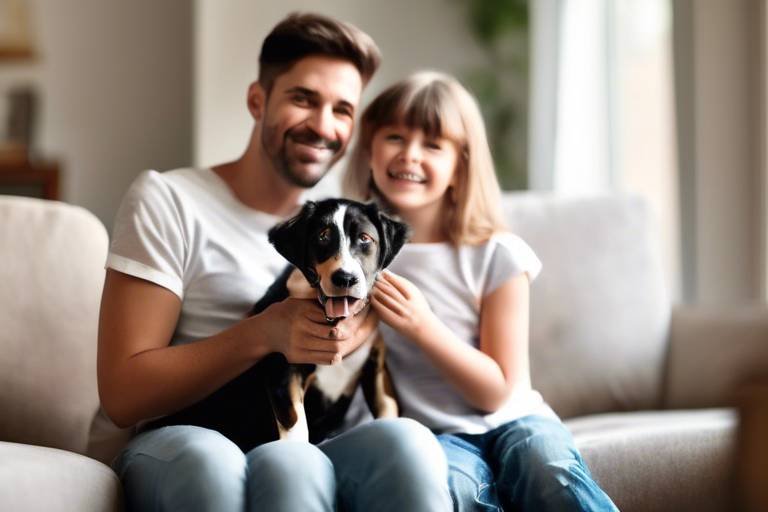How to Prepare for a Pet Adoption Interview
So, you’ve decided to adopt a pet—congratulations! This is an exciting journey, but before you dive into the world of wagging tails and purring companions, there’s an important step you need to conquer: the pet adoption interview. Think of it as your golden ticket to welcoming a new furry friend into your home. Just like any interview, preparation is key. But don’t worry! We’re here to guide you through this process, ensuring that you present yourself as a responsible and caring pet owner.
The interview is not just a formality; it’s an opportunity for both you and the shelter to determine if you’re a perfect match for each other. Shelters want to ensure that their animals go to loving homes, and you want to show that you’re ready for the commitment of pet ownership. So, how do you ace this interview? Well, let’s break it down into manageable steps, making sure you’re fully equipped to impress the adoption team.
First things first, it’s essential to understand the adoption process. Familiarize yourself with the typical steps involved, which usually include submitting an application, going through an interview, and possibly having a home check. This roadmap will not only prepare you mentally but will also help you feel more confident as you navigate through the process. Think of it as preparing for a road trip: you wouldn’t just hop in the car without knowing your route, right?
Next up, you’ll want to research the shelter or organization from which you plan to adopt. Each shelter has its own policies and philosophies regarding pet adoption. Understanding their values and the types of pets they have available can give you a significant edge during your interview. It’s like going on a first date; knowing a bit about your date’s interests can lead to a more meaningful conversation.
Another crucial step is to prepare your home for a new pet. Before the interview, think about how you can create a welcoming environment. This means pet-proofing your space, gathering necessary supplies, and ensuring that your future furry friend will have a safe and comfortable area to explore. Imagine bringing a new family member home—wouldn’t you want to make them feel right at home from day one?
Don’t forget about gathering personal references. Providing references can significantly strengthen your application. Think about who in your life can vouch for your character and suitability as a pet owner. This could be friends, family, or even neighbors who can speak to your responsibility and love for animals. Just like a job application, having strong references can make all the difference.
Now, let’s talk about anticipating common interview questions. Being prepared for typical questions can help you feel more confident. Questions may range from your experience with pets to how you plan to care for your new companion. It’s a good idea to think about your answers ahead of time, so you can respond thoughtfully and authentically. Remember, this is your chance to shine!
During the interview, it’s vital to demonstrate your commitment to pet ownership. Shelters want to see that you understand the responsibilities that come with caring for a pet. Be ready to discuss your willingness to invest time, energy, and resources into your new furry family member. Think of it as a long-term relationship; you’re not just adopting a pet for today but committing to a lifetime of love and care.
Your lifestyle and preferences will also play a significant role in the adoption process. During the interview, be open about your daily routine, activity level, and what you’re looking for in a pet. This honesty helps the shelter staff match you with a pet that fits seamlessly into your life. After all, adopting a pet is like finding the right puzzle piece; it needs to fit perfectly into your existing picture.
Finally, don’t underestimate the power of following up after the interview. A simple thank-you note or email can leave a lasting impression. Expressing your gratitude and reiterating your interest in adopting a pet shows that you’re genuinely invested in the process. It’s like saying, “I’m ready to take this journey with you!”
- What should I bring to the interview? Bring any required documents, such as identification, proof of residence, and references.
- How long does the interview typically last? Interviews usually last around 30 to 60 minutes, depending on the organization.
- Can I adopt a pet if I have other animals at home? Yes, many shelters consider your existing pets during the adoption process to ensure compatibility.
- Is there a fee for adopting a pet? Most shelters have an adoption fee that helps cover the costs of care and medical treatment for the animals.

Understanding the Adoption Process
Adopting a pet is a heartwarming journey filled with excitement, but it’s also a process that requires some understanding and preparation. Before you dive into the world of furry companions, it’s essential to familiarize yourself with the typical steps involved in pet adoption. This knowledge not only helps you feel more confident but also ensures that you are making informed decisions along the way.
The adoption process generally starts with the application submission. This is where you fill out a form detailing your personal information, living situation, and your experience with pets. It might seem straightforward, but this application is crucial as it gives the shelter or organization a glimpse into your life and suitability as a pet owner. After submitting your application, you can expect to be contacted for an interview. This is a pivotal moment where you get to showcase your passion for pets and your readiness to welcome one into your home.
During the interview, the adoption staff will likely ask you a variety of questions to assess your understanding of pet care and your lifestyle. It’s a chance for you to express your enthusiasm and commitment. You may be asked about your daily routine, how much time you can dedicate to a pet, and what you envision for your future with a furry friend. Be prepared to answer these questions honestly and thoughtfully, as they will help the organization determine if you’re a good match for one of their animals.
Once you’ve successfully navigated the interview, the next step often involves a home check. This is where a representative from the shelter visits your home to ensure it’s a safe environment for a pet. They’ll look for potential hazards and assess whether your living situation is suitable for the type of pet you wish to adopt. It’s essential to take this step seriously, as it demonstrates your commitment to providing a loving and secure home.
In summary, the adoption process typically includes:
- Application Submission: Filling out necessary forms.
- Interview: Discussing your suitability as a pet owner.
- Home Check: Ensuring a safe environment for the pet.
Each of these steps plays a significant role in ensuring that both the pet and the adopter are a good match. Remember, this process is not just about finding a pet; it's about creating a lasting bond that enriches both your life and the life of your new companion. So, approach each step with an open heart and a readiness to embrace the responsibilities that come with pet ownership.
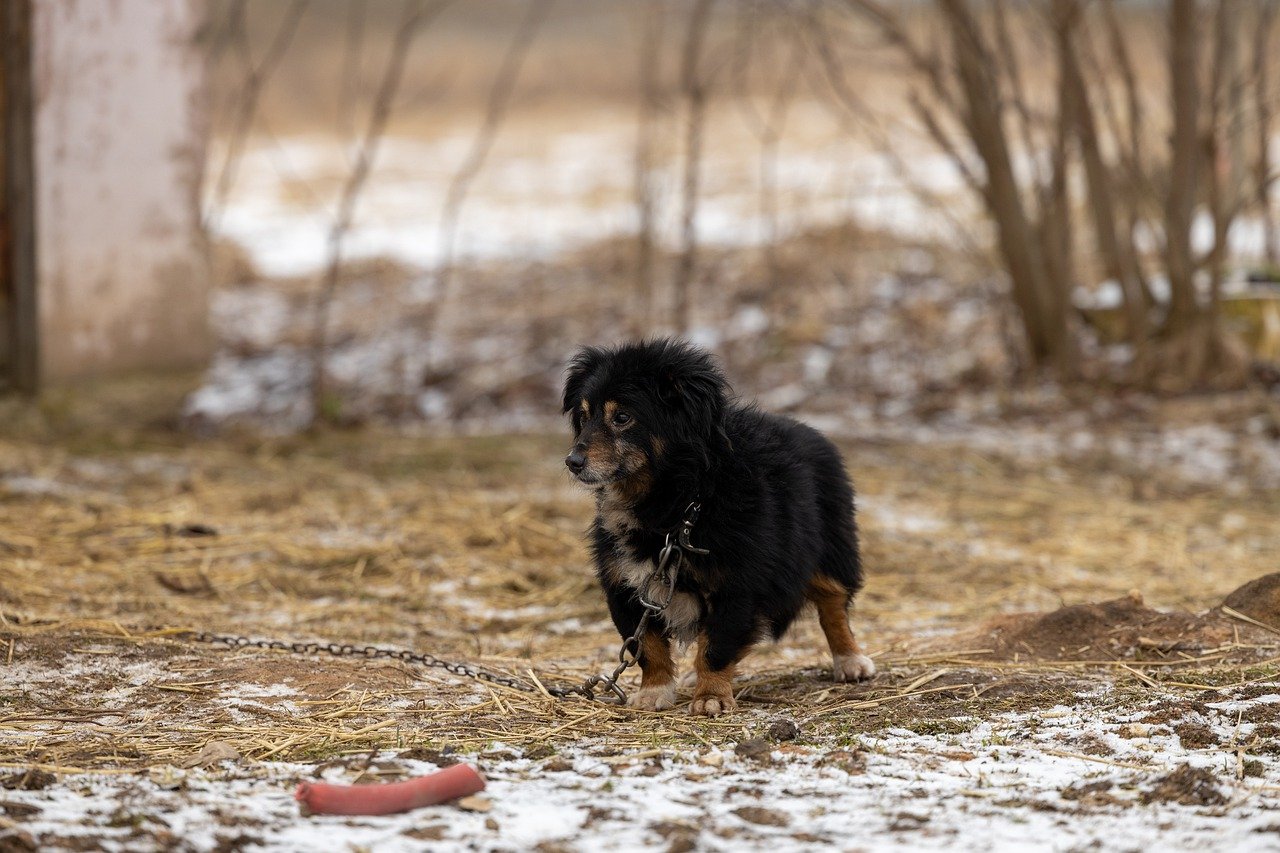
Researching the Shelter or Organization
When it comes to adopting a pet, understanding the shelter or organization from which you wish to adopt is crucial. This step not only enhances your knowledge but also helps you feel more connected to the process. Think of it as preparing for a first date; you wouldn’t want to walk into it blind, right? You want to know who you’re dealing with, what they stand for, and how they treat their animals.
Start by visiting the shelter's website. Most reputable organizations provide a wealth of information about their mission, the types of animals they rescue, and their adoption policies. Take note of their philosophies regarding animal care and welfare. Are they a no-kill shelter? Do they focus on rehabilitation? Understanding these aspects can help you align your values with theirs.
Additionally, consider reaching out directly to the shelter. A simple phone call or email can reveal a lot about their operations. Ask questions such as:
- What is your adoption process like?
- How do you assess the suitability of potential adopters?
- What kind of support do you offer after adoption?
Another important aspect is to read reviews or testimonials from previous adopters. Websites like Google, Yelp, or even social media platforms can provide insights into other people’s experiences. Did they find the staff helpful and knowledgeable? Were they satisfied with the condition of the animals? This information can be invaluable in making your decision.
Finally, if possible, visit the shelter in person. Observing how the staff interacts with the animals can give you a sense of their commitment to animal welfare. Are the animals well-cared for? Do they seem happy and healthy? Your observations can help you gauge whether this organization is the right fit for you and your future pet.
In summary, researching the shelter or organization from which you plan to adopt is not just a formality; it’s a vital step in ensuring that you are making a responsible choice. By gathering as much information as possible, you can approach your pet adoption interview with confidence, knowing that you are aligning yourself with an organization that shares your values and commitment to animal welfare.
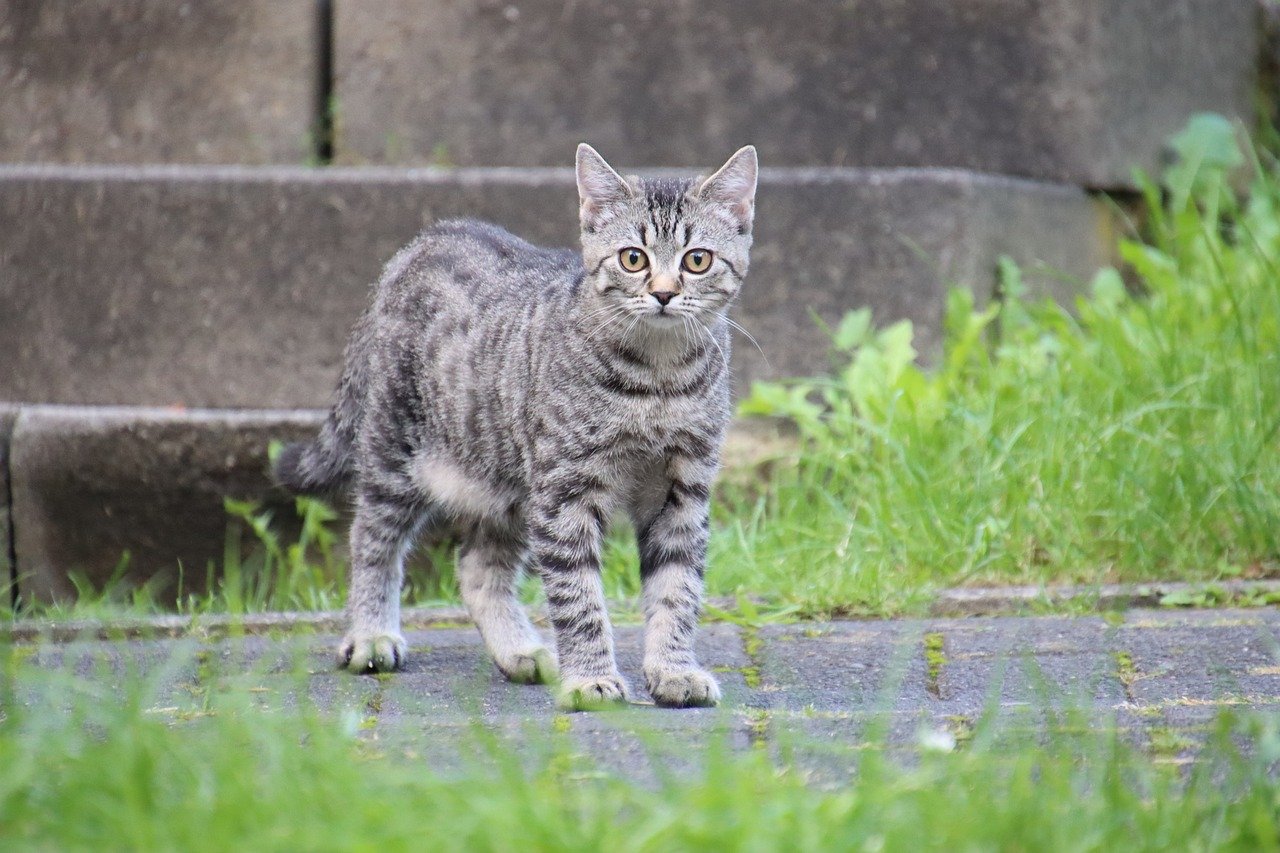
Preparing Your Home for a New Pet
Bringing a new pet into your home is like adding a new member to your family, and just like any new addition, you want to make sure everything is ready for their arrival. Preparing your home for a new pet isn't just about having the right supplies; it's about creating a safe and welcoming environment where your furry friend can thrive. Think of it as setting the stage for a new adventure—one filled with love, companionship, and a whole lot of fun!
First things first, you need to pet-proof your space. This means going through your home with a fine-tooth comb to identify potential hazards. Consider the following:
- Are there any exposed electrical cords that your new pet could chew on?
- Do you have any toxic plants or substances within reach?
- Are there small objects lying around that could be swallowed?
Taking the time to eliminate these risks can prevent accidents and ensure your home is a safe haven for your new companion. You might want to think of yourself as a detective, searching for clues that could lead to trouble!
Next, gather the necessary supplies. Just like a chef needs the right ingredients to whip up a delicious meal, you'll need to stock up on essentials for your pet. Depending on the type of animal you’re adopting, this may include:
- Food and water bowls
- High-quality pet food suitable for their age and breed
- A comfortable bed or crate for them to sleep in
- Toys to keep them entertained and mentally stimulated
- Grooming supplies, such as brushes and nail clippers
Make sure to also have a designated area for your new pet to eat, sleep, and play. This will help them feel secure and understand that they have their own space within your home.
Moreover, consider the layout of your home. If you have stairs, ensure that your new pet can navigate them safely. For instance, if you're adopting a puppy, you might want to block off areas that could be hazardous until they learn the ropes. Think of your home like a maze, and your goal is to make it easy for your pet to find their way around without getting into any trouble!
Lastly, don’t forget to inform your family members about the new addition. Discussing the responsibilities and expectations with everyone in the household is crucial. It’s like drafting a team charter—the more everyone knows their role, the smoother things will go. Make sure everyone is on board with the changes and understands how to interact with the new pet, especially children. Teaching them how to treat the pet with kindness and respect will set the tone for a harmonious household.
In summary, preparing your home for a new pet involves a mix of safety, organization, and family communication. By taking these steps, you’re not just making your home pet-friendly; you’re creating a loving environment where your new furry friend can feel safe and cherished. So roll up your sleeves, get ready for some fun, and prepare to welcome your new best buddy!
Q: How long does it take for a new pet to adjust to their new home?
A: It can take anywhere from a few days to several weeks for a pet to adjust. Be patient and give them time to explore and feel comfortable.
Q: What should I do if my pet is anxious in their new environment?
A: Create a quiet space for them with their bed and toys. Use calming techniques like gentle petting and soft talking to help them relax.
Q: Do I need to buy special food for my new pet?
A: Yes, it’s important to provide food that is appropriate for their age, size, and breed. Consult with your vet for recommendations.
Q: Should I introduce my new pet to other pets right away?
A: It’s best to introduce them gradually. Start with short meetings in a controlled environment to ensure everyone feels safe.

Gathering Personal References
When it comes to pet adoption, gathering personal references can be a game-changer. Think of it as building your own little cheerleading squad that will advocate for you during the interview process. These references are not just names on a piece of paper; they are individuals who can vouch for your character, reliability, and suitability as a pet owner. So, who should you consider? Well, it’s best to choose people who know you well and can speak positively about your ability to care for a pet.
Consider reaching out to friends, family members, or even neighbors who can attest to your nurturing qualities and sense of responsibility. For instance, if you’ve had pets in the past, a former veterinarian or a pet sitter could provide valuable insights into your pet care practices. When selecting your references, think about the following:
- Trustworthiness: Choose individuals who have seen you in various situations and can speak to your dependability.
- Experience with Pets: References should ideally have some familiarity with animals, especially if they’ve seen you care for pets before.
- Availability: Ensure that your references are willing and able to take a call or respond to an email from the adoption agency.
Once you've identified your references, it's crucial to communicate with them beforehand. Let them know that you’re adopting a pet and that they might receive a call or email from the shelter. This is not just courteous; it also prepares them to provide the best possible reference. You might say something like, “Hey, I’m looking to adopt a dog, and I’d love for you to be one of my references. The shelter might reach out to you, so I wanted to give you a heads-up!” This kind of communication ensures they’re ready to highlight your strengths.
In addition, it’s helpful to provide your references with a bit of context about the type of pet you’re looking to adopt. This way, they can tailor their responses to align with what the shelter is looking for. For example, if you're adopting a high-energy dog, your reference can mention your active lifestyle and how you enjoy outdoor activities, painting a picture of a perfect match.
Lastly, don’t forget to express your gratitude! A simple thank-you note or message after the process can go a long way. Not only does it show appreciation for their support, but it also strengthens your relationship with them. Remember, the goal here is to present yourself as a responsible and caring pet owner who is ready to welcome a new furry friend into your life.

Anticipating Common Interview Questions
When it comes to preparing for a pet adoption interview, one of the most effective strategies is to anticipate the questions you might face. Think of it as gearing up for a friendly chat where the goal is to show your passion for pet ownership and your readiness to provide a loving home. The interviewers are not only assessing your suitability as a pet parent, but they also want to ensure that the pet you choose will thrive in your care. So, what kind of questions should you expect? Let's dive into some common ones and how you can prepare to answer them.
First, you might be asked about your previous experience with pets. This could include questions like, "Have you owned pets before?" If you have, share your experiences, the types of pets you've had, and what you learned from those relationships. If you're a first-time pet owner, don’t fret! Be honest about your enthusiasm for learning and your commitment to providing a nurturing environment for a new furry friend.
Another common question revolves around your lifestyle and how it aligns with pet ownership. Interviewers may ask, "What does a typical day look like for you?" This is your chance to showcase your daily routine and how you plan to incorporate pet care into it. For instance, if you work long hours, explain how you plan to manage your time effectively, perhaps through doggy daycare or hiring a pet sitter. The key here is to demonstrate that you've thought about the responsibilities involved in pet ownership.
Furthermore, you might encounter questions about your living situation, such as, "Do you rent or own your home?" and "Are there any restrictions on pet ownership?" Be upfront about your living arrangements and any regulations you may face. If you rent, it’s beneficial to have your landlord's approval ready to show that you’ve done your homework and are responsible.
Additionally, be prepared to discuss your understanding of the specific needs of the pet you wish to adopt. For example, if you're interested in adopting a dog, you might be asked, "What breed are you considering, and why?" This question allows you to express your knowledge about different breeds and their needs. Make sure to highlight how you plan to meet those needs, whether it’s through exercise, grooming, or socialization.
Lastly, it’s essential to convey your long-term commitment to pet ownership. A common question here might be, "What will you do if your circumstances change?" This is a critical aspect of pet ownership, and your answer should reflect your dedication. Discuss your willingness to adapt and find solutions, whether it’s seeking help from friends and family or utilizing community resources.
By preparing for these questions, you not only boost your confidence but also demonstrate your genuine commitment to providing a loving home for a pet. Remember, the interview is as much about finding the right fit for the animal as it is about proving your readiness to be a responsible pet owner. So, take a deep breath, be yourself, and let your passion for animals shine through!
As you prepare for your pet adoption interview, you might have some lingering questions of your own. Here are a few frequently asked questions that can help clarify the process:
- What should I bring to the interview? Bring any required documents, such as identification, proof of residence, and references.
- How long does the interview typically last? Interviews usually last between 30 minutes to an hour, depending on the organization.
- Can I adopt a pet on the same day as the interview? This varies by organization. Some may allow same-day adoptions, while others may require follow-up visits.
- What happens if I’m not approved to adopt? If you’re not approved, ask for feedback and consider reapplying in the future after addressing any concerns.

Demonstrating Your Commitment
When it comes to pet adoption, demonstrating your commitment is absolutely vital. Think of it as a first date with your future furry friend—you're not just looking to impress the shelter staff, but you're also laying the groundwork for a long-lasting relationship. You want to show that you're not only ready to provide a loving home but that you understand the responsibilities that come with pet ownership. This is your chance to shine, so let's break down how you can effectively showcase your dedication during the interview.
First and foremost, it’s essential to articulate your understanding of pet care responsibilities. This goes beyond just feeding and walking; it includes regular vet visits, grooming, and understanding the specific needs of the breed you’re interested in. For instance, if you’re considering adopting a high-energy dog, you should be prepared to discuss how you’ll provide adequate exercise and mental stimulation. This shows the interviewers that you’re not just adopting on a whim but that you’ve done your homework and are ready for the commitment.
Moreover, you can express your commitment by sharing your plans for training and socialization. Discussing how you intend to train your new pet, whether through obedience classes or at-home training, can make a significant impact. It indicates that you’re willing to invest time and effort into ensuring that your pet is well-behaved and happy. Remember, a well-trained pet is a happy pet, and it reflects positively on you as an owner.
Another way to demonstrate your commitment is by outlining the resources you’re prepared to invest. This includes not only financial resources but also emotional and time commitments. You might say something like, “I understand that pets can sometimes be expensive with food, vet visits, and other supplies, and I’m fully prepared for that.” This approach reassures the shelter that you are serious about this responsibility. You might also want to mention how you plan to spend quality time with your new pet, whether it’s through daily walks, playtime, or simply cuddling on the couch.
Finally, don't forget to mention your support system. If you have family or friends who are pet owners, sharing their experiences and how they can support you in your journey can further solidify your commitment. You might say, “My sister has a dog, and she’s been a great resource for advice and support.” This shows that you’re not going into this alone and that you have a network to help you navigate the joys and challenges of pet ownership.
In summary, demonstrating your commitment during the pet adoption interview is about more than just saying the right words; it's about conveying a genuine understanding of what it means to be a responsible pet owner. By showcasing your knowledge, plans for training, willingness to invest resources, and the support system around you, you’ll leave a lasting impression that can significantly enhance your chances of a successful adoption.
- What should I expect during the pet adoption interview? The interview typically involves questions about your lifestyle, living situation, and your plans for the pet's care.
- How can I prepare for common interview questions? Research common questions and practice your responses, focusing on your commitment and understanding of pet care.
- Is it necessary to provide references? Yes, providing personal references can strengthen your application and show the shelter that you are a responsible potential pet owner.
- What if I have never owned a pet before? Be honest about your experience, but emphasize your willingness to learn and your commitment to providing a loving home.
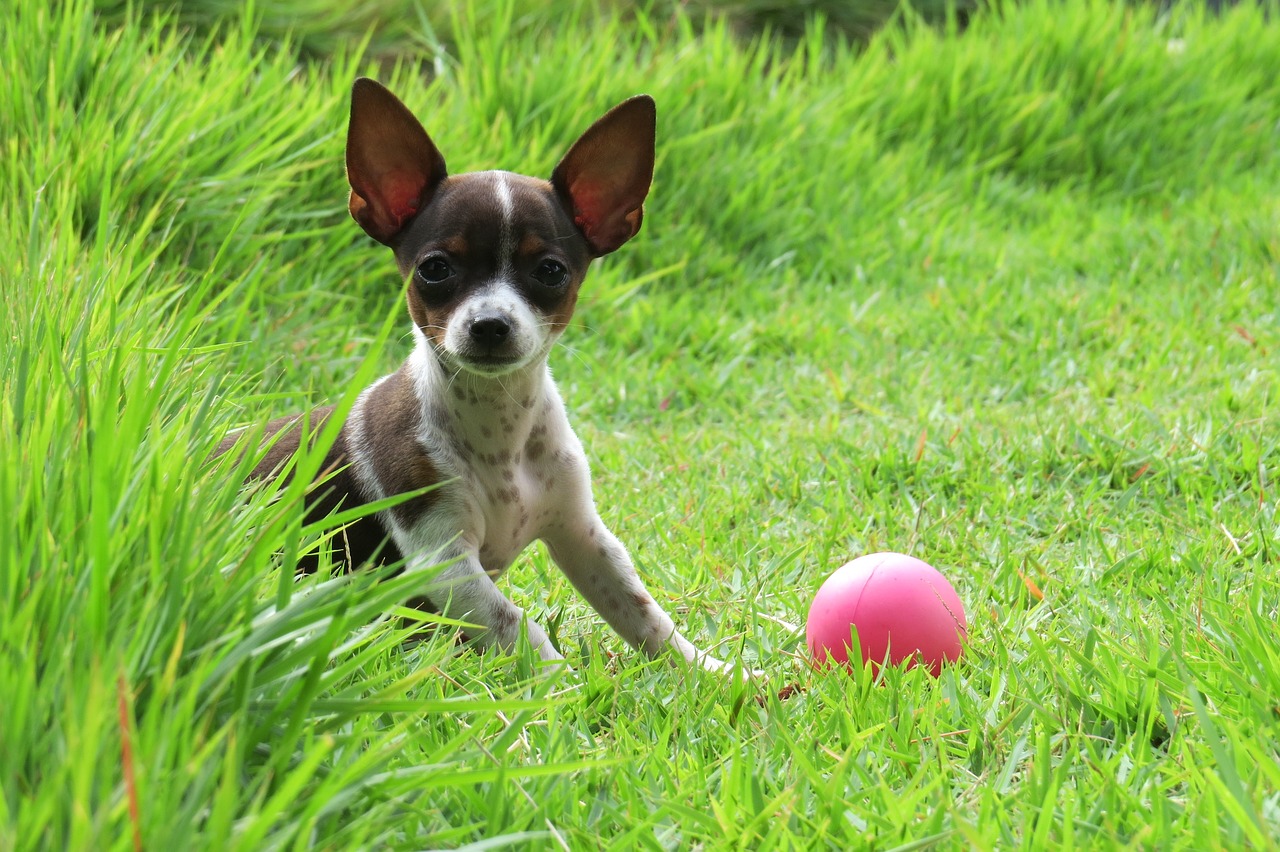
Discussing Your Lifestyle and Preferences
When it comes to adopting a pet, understanding your own lifestyle and preferences is not just a formality; it’s a crucial step in ensuring that both you and your future furry friend will thrive together. Think of it like matchmaking, where the goal is to find the perfect companion that fits seamlessly into your life. Before heading into the interview, take a moment to reflect on your daily routine, activity level, and what you envision in a pet. Are you a couch potato who enjoys binge-watching shows, or are you more of an outdoorsy type who loves long hikes? These details are essential in determining the right pet for you.
During the interview, be open and honest about your lifestyle. Shelters and organizations appreciate transparency, as it helps them place pets in homes where they will be loved and well cared for. For instance, if you work long hours, you might want to consider adopting a pet that is more independent, like a cat, rather than a dog that requires constant companionship. On the flip side, if you’re an active person, a high-energy dog breed could be the perfect sidekick for your adventures.
In addition to your daily routine, think about your living situation. Do you have a spacious backyard or live in a small apartment? This can significantly influence the type of pet that would be suitable for you. For example, larger breeds typically need more space to roam, while smaller breeds can adapt well to apartment living. It’s also worth considering any restrictions your living situation might impose, such as pet policies in rental agreements.
Furthermore, don't forget to discuss your preferences regarding pet care. Are you prepared for the grooming needs of a long-haired dog, or do you prefer a low-maintenance pet? This is where your personal preferences come into play. You might want to jot down a few notes before the interview to help you articulate your thoughts clearly. Here are some points to consider:
- Daily activity level: How much exercise can you provide?
- Time commitment: Are you ready for training and socialization?
- Space availability: Do you have enough room for the type of pet you want?
- Allergies: Are there any sensitivities in your household?
- Long-term commitment: Are you ready for the responsibility that comes with pet ownership?
By discussing these aspects, you not only help the shelter staff find the right match for you but also set the stage for a harmonious relationship with your future pet. Remember, adopting a pet is not just about the initial excitement; it's about the long-term commitment that comes with it. So, be thoughtful, be honest, and most importantly, be yourself. Your future pet will thank you for it!
1. What should I consider when discussing my lifestyle in the interview?
When discussing your lifestyle, consider your daily routine, activity level, living situation, and any specific preferences or needs you have regarding pet care. This will help the organization recommend a pet that fits well with your lifestyle.
2. How can I prepare for questions about my lifestyle and preferences?
You can prepare by reflecting on your daily habits, the amount of time you can dedicate to a pet, and your living arrangements. It may also help to write down key points you want to share during the interview.
3. Is it important to be honest about my lifestyle?
Absolutely! Being honest helps the shelter find the best match for you and the pet. It ensures that both you and the animal will be happy and comfortable in your new life together.
4. What if my lifestyle changes after I adopt a pet?
Life can be unpredictable, and changes do happen. If your lifestyle changes significantly, it’s important to reassess your pet’s needs and make adjustments to ensure their well-being. Always prioritize their care and happiness.
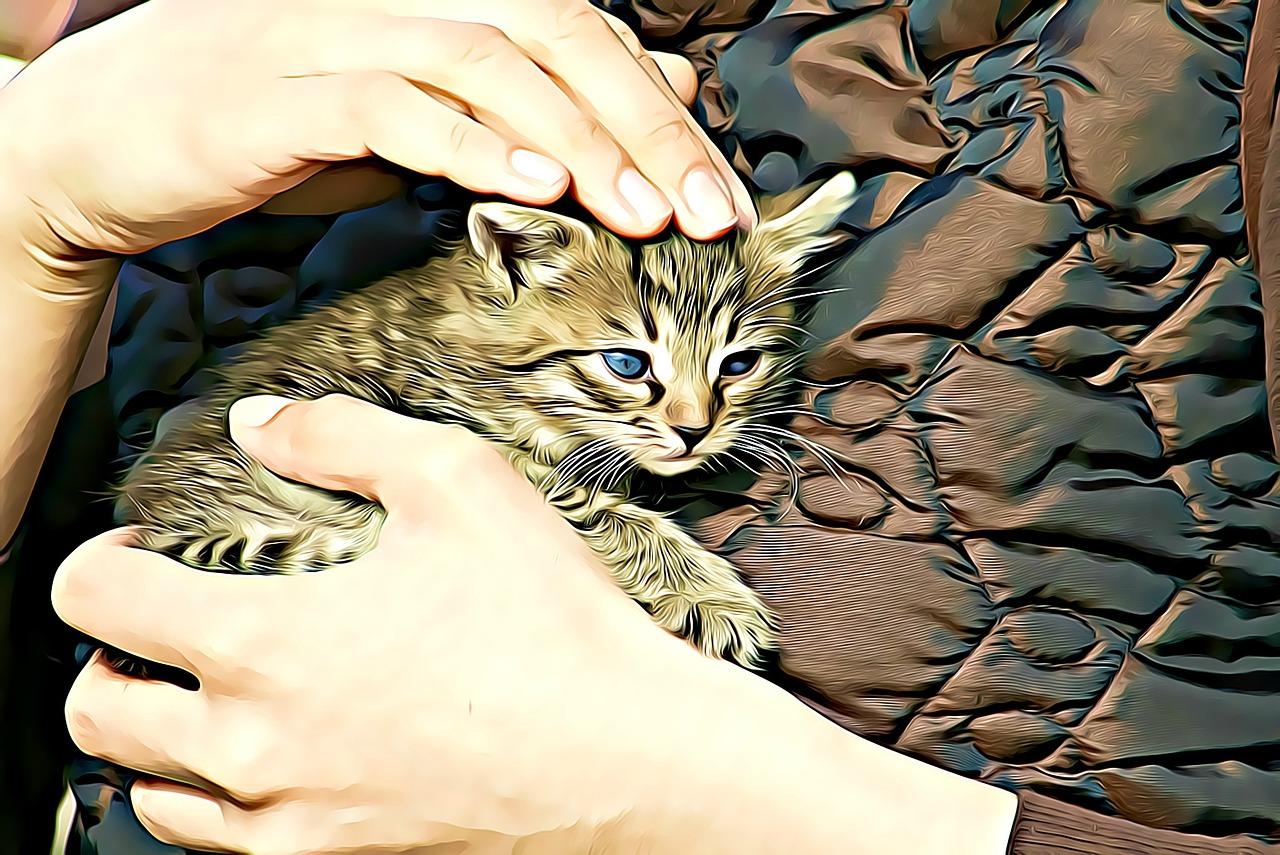
Following Up After the Interview
So, you’ve just wrapped up your pet adoption interview, and now you might be wondering, “What’s next?” Following up after the interview is not just a formality; it’s a golden opportunity to reinforce your enthusiasm and commitment to adopting a furry friend. Imagine you’re on a first date; sending a thoughtful message afterward can leave a lasting impression. Similarly, a follow-up can show the shelter or organization that you’re genuinely interested and serious about providing a loving home.
First and foremost, it’s essential to express your gratitude. A simple thank-you note can go a long way. You can send an email or a handwritten note—whichever feels more personal to you. In your message, make sure to mention specific aspects of the interview that resonated with you. This could be anything from a conversation about a particular pet to the organization’s mission that aligns with your values. This not only shows that you were actively engaged during the interview but also reinforces your compatibility with their philosophy.
Additionally, if you have any lingering questions or thoughts that popped up after the interview, don’t hesitate to include them in your follow-up. This can demonstrate your eagerness to learn more and your proactive approach. For instance, you might ask about the pet’s history or specific care requirements. This kind of inquiry can signal to the organization that you’re not just a casual adopter but someone who is genuinely invested in the well-being of the pet.
Timing is also crucial. Aim to send your follow-up within 24 to 48 hours after the interview. This ensures that your conversation is still fresh in everyone’s minds. If you wait too long, your enthusiasm might fade from memory, and you don’t want to risk being forgotten in the shuffle of other applicants. Think of it as striking while the iron is hot; the sooner you follow up, the more impactful your message will be.
Lastly, if you don’t hear back within a week or so, it’s perfectly acceptable to send a gentle reminder. This can be a simple note reiterating your interest and asking if there are any updates regarding your application. However, keep it light and friendly; you don’t want to come off as pushy. Instead, think of it as a friendly nudge, akin to checking in with a friend after a fun outing.
In summary, following up after your interview is not just about checking a box; it’s about building a connection. By expressing gratitude, asking thoughtful questions, and being timely in your communication, you can leave a positive impression that sets you apart from other applicants. Remember, the goal is to show that you’re not just looking to adopt a pet, but you’re ready to embrace the responsibilities and joys that come with it.
- How soon should I follow up after the interview?
It's best to follow up within 24 to 48 hours to keep the conversation fresh. - What should I include in my follow-up message?
Express gratitude, mention specific interview highlights, and ask any lingering questions you have. - Is it okay to send a reminder if I don’t hear back?
Yes, sending a gentle reminder after a week is perfectly acceptable. - Should I send a handwritten note or an email?
Both are great options; choose the one that feels more personal to you.
Frequently Asked Questions
- What should I expect during the pet adoption interview?
During the pet adoption interview, you can expect a friendly conversation with the shelter staff. They will ask about your lifestyle, previous pet ownership experiences, and your plans for the new pet. It’s a chance for them to assess your suitability as a pet owner and for you to express your commitment to providing a loving home.
- How can I prepare for common interview questions?
To prepare for common interview questions, think about your daily routine and how a pet fits into it. Common questions may include inquiries about your work schedule, how much time you can dedicate to a pet, and your plans for training and socialization. Practicing your answers with a friend can also help boost your confidence!
- What kind of personal references should I gather?
When gathering personal references, choose individuals who can speak positively about your character and responsibility. These could be friends, family members, or coworkers who know you well and can vouch for your ability to care for a pet. Make sure to ask for their permission before listing them as references!
- Why is it important to research the shelter or organization?
Researching the shelter or organization is crucial because it helps you understand their policies, philosophies, and the types of pets they have available. This knowledge can also inform your questions during the interview, showing that you are genuinely interested and invested in the adoption process.
- How can I demonstrate my commitment to pet ownership?
Demonstrating your commitment to pet ownership can be done by discussing your understanding of pet care responsibilities, such as feeding, grooming, and regular veterinary visits. Sharing your plans for training and socializing the pet also helps show that you are serious about providing a stable and loving environment.
- What should I do after the interview?
After the interview, it’s a good idea to follow up with a thank-you message or email. Express your gratitude for the opportunity to interview and reiterate your interest in adopting a pet. This gesture not only leaves a positive impression but also shows your enthusiasm for becoming a pet parent!
- Can I adopt a pet if I have never owned one before?
Absolutely! Many shelters are happy to work with first-time pet owners. Just be honest about your experience level during the interview and express your willingness to learn. The staff can provide valuable advice and resources to help you become a responsible pet owner.
- What if I have other pets at home?
If you have other pets at home, it's important to discuss this during the interview. Shelters often consider the compatibility of pets when making adoption decisions. Be prepared to talk about your current pets’ personalities, and how you plan to introduce a new pet to your home.

